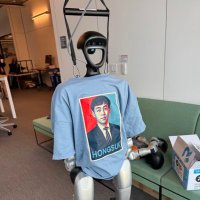
Hongsuk Benjamin Choi
@redstone_hong
ID: 879115184458969089
https://hongsukchoi.github.io/ 25-06-2017 23:12:47
24 Tweet
72 Takipçi
96 Takip Edilen


















@redstone_hong
ID: 879115184458969089
https://hongsukchoi.github.io/ 25-06-2017 23:12:47
24 Tweet
72 Takipçi
96 Takip Edilen
















